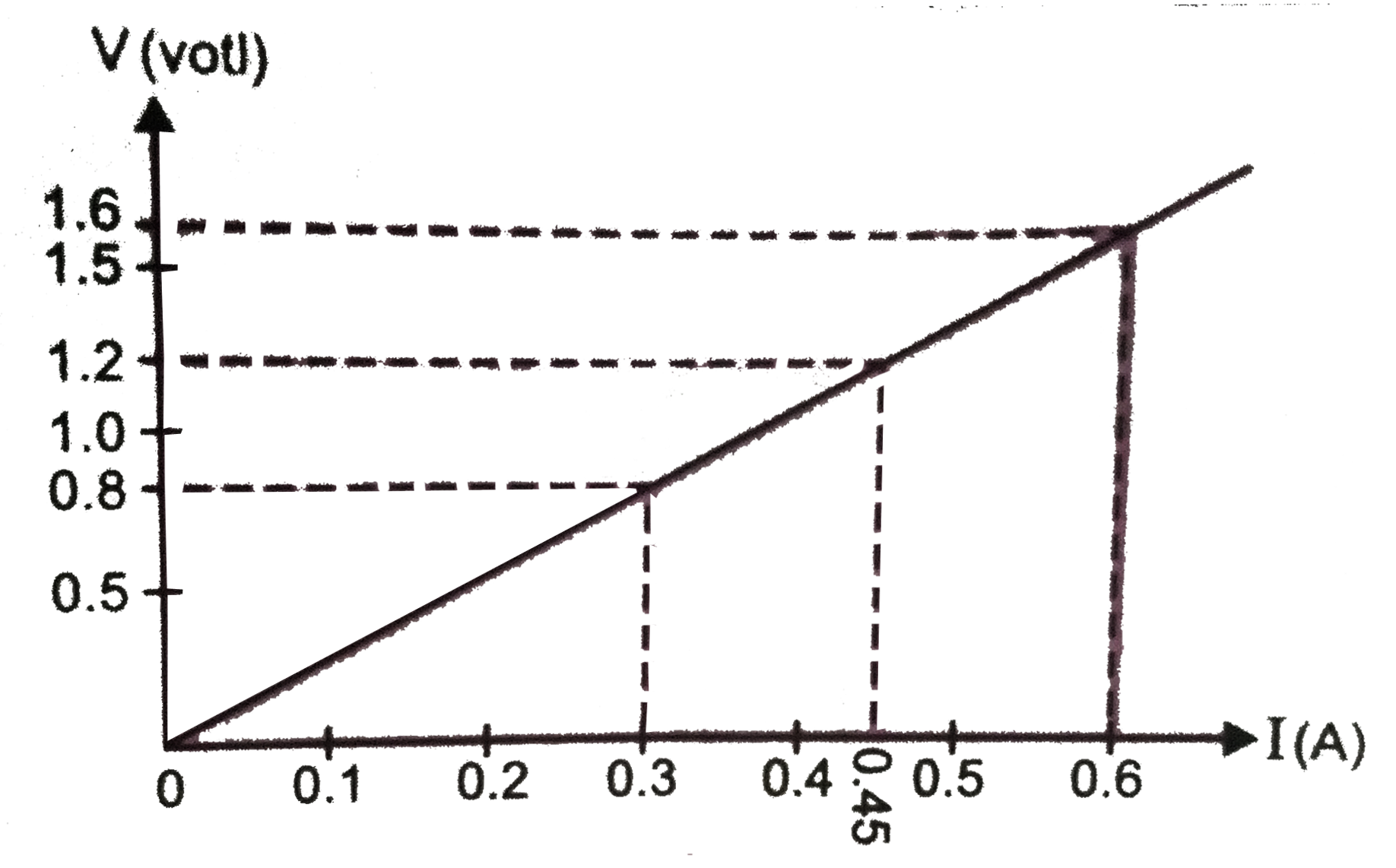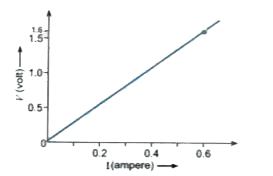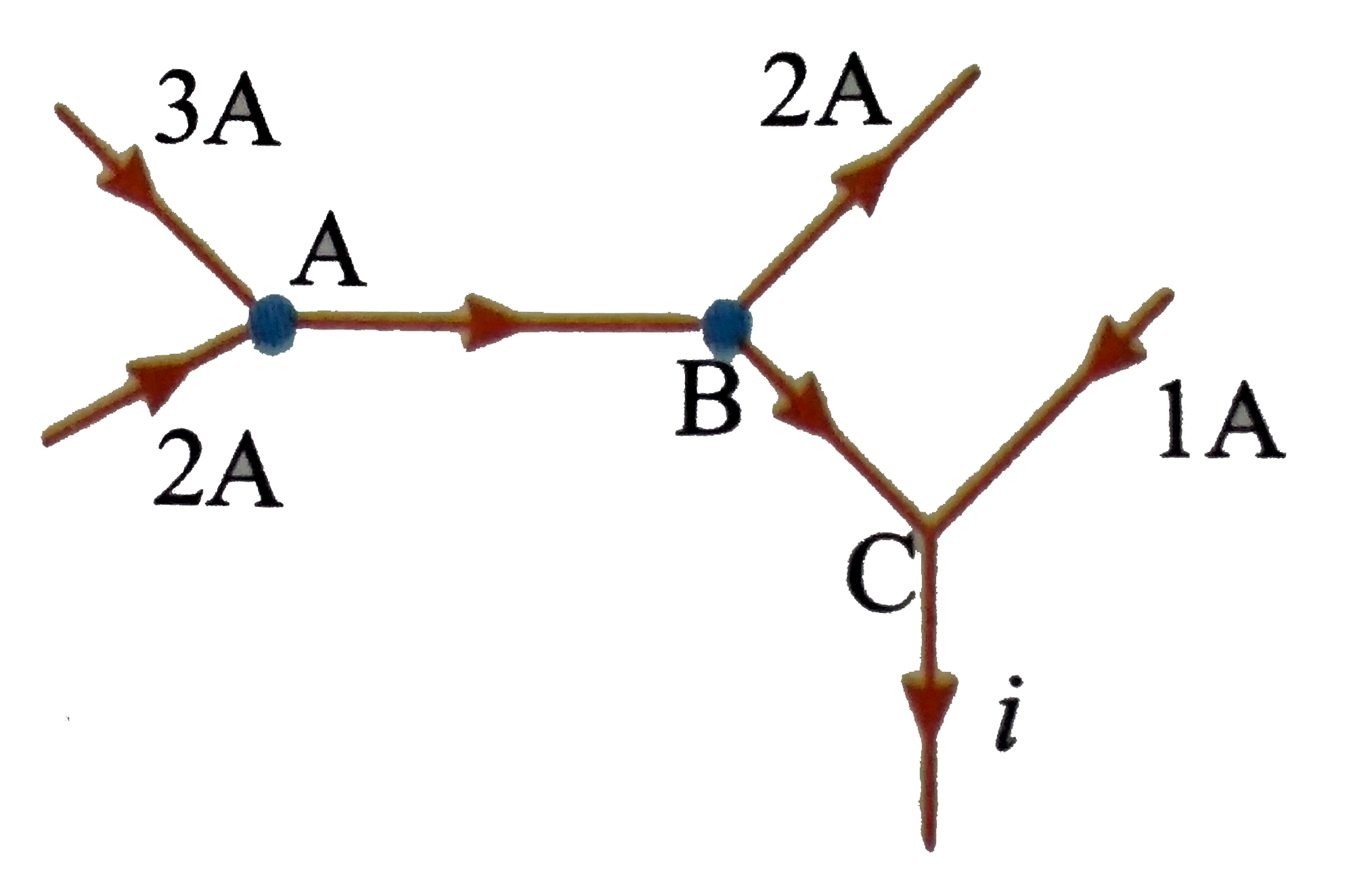(a) Name an instrument that measures electric current in a curcuit. Define the unit of eletric current.
(b) What do the following symbols, (Fig. 3.58) mean in a circuit diagram ?
( c) An electric circuit consisting of a 0.5m long nichrome wire XY, an ammeter, a voltmeter, four cells of 1.5V each and a plug key was set up.
(i) Draw a diagram of this electric circuit to study the relation between the potential difference maintained between the points 'X' and 'Y' and the electric current flowing through XY.
(ii) Graph shown in (Fig. 3.59) was plotted VandI values.
What would be the values of v/I ratios when the potential differences are 0.8V,1.2Vand1.6V respectively ? What conclusion do you draw from these values ?
 ,
,
 .
.
(a) Electric current is measured by an instrument called an ammeter.
The unit of electric current is ampere. When 1 coulomb of charge flows through any cross-section of a conductor in 1 second, the electric current flowing through it is said to be 1 ampere
(b) (i) This symbol represents a variable resistance or rheostat
(ii) Thus symbol represents on plug key or switch which is closed.
(c) (i) The circuit diagram to study the relation between V and I is shown in (Fig. 4).
(ii) When V1=0.8V,I1=0.3A Thus, V1I1=0.8V0.3A=2.67Ω
When V2=1.2V,I2=0.45A Thus, V2I2=1.2V0.45A=12045Ω=83Ω=2.67Ω
When V3=1.6V,I3=0.6A. Thus, V3I3=1.6V0.6A=166Ω83Ω=2.67Ω
it is clear that V1I1=V2I2=V3I3 or VI = constant.
 .
.
Topper's Solved these Questions
Similar Questions
(a) Name an instrument that measures electric current in a circuit. Define the unit of electric current.
(b) What do the following symbols represent in a circuit diagram?

(c) An electric circuit consisting of a 0.5 m long nichrome wire XY, an ammeter, a voltmeter, four cells of 1.5 V each and a plug key was set up.
(i) Draw the electric circuit diagram to study the relation between the potential difference maintained between the points 'X' and 'Y' and the electric current flowing through XY.
(ii) Following graph was plotted between Vand I values using above circuit:

What would be the values of ratios when the potential difference is 0.8 V, 1.2 V and 1.6 respectively? What conclusion do you draw from these values?
View SolutionName a instrument /device used to measure electric current in a circuit?
View Solution
Knowledge Check
What do the following symbols mean in circuit diagrams?
 A(i) Closed plug key (ii) Variable resistanceB(i)resistance (ii) closed plug keyC(i) Variable resistance (ii) Closed plug keyD(i) variable resistance (ii) open plug key
A(i) Closed plug key (ii) Variable resistanceB(i)resistance (ii) closed plug keyC(i) Variable resistance (ii) Closed plug keyD(i) variable resistance (ii) open plug key
The electric current I in the circuit shown isA6AB2AC3AD4AThe device used to measure electric current in a cir-cuit is called _____
AspeedometerBammeterCvoltmeterDkilowatt hour meter
Define electric current. What is the unit of electric current? Define it?
View SolutionElectric current is circuit is measure by:
View Solution(a) What is an electric current? What makes an electric current flow in a wire?
(b) Define the unit of electric current (or Define ampere).
View Solution(a) The components of an electric circuit are 0.5 m long nichrome wire XY, an ammeter, a voltmeter, four cells of 1.5 V each, rheostat and a plug key. Draw a circuit diagram to study the relation between potential difference across the terminals X and Y of the wire and current flowing through it.
(b) State the law that relates potential difference across a conductor with the current flowing through it.
View SolutionName the instrument used for measuring electric current flowing in an electric circuit.
View Solution
